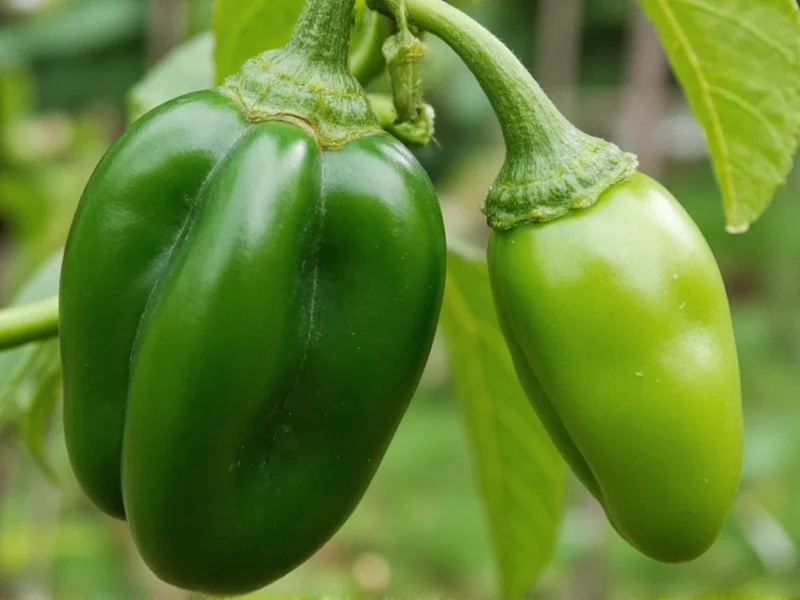Understanding the various names for chili peppers can prevent confusion in recipes and grocery shopping. The poblano pepper, a staple in Mexican cuisine, goes by different names depending on its form and regional usage. This comprehensive guide explores the alternative names for poblano peppers, their characteristics, and how they're used in cooking.
What Exactly Is a Poblano Pepper?
The poblano ( Capsicum annuum) is a mild to medium-heat chili pepper originating from Puebla, Mexico—hence the name "poblano." When fresh, it appears as a large, dark green pepper with a heart-shaped profile and thick walls. As it matures, it turns from green to a rich, dark red or brown color.
Alternative Names for Poblano Peppers
While "poblano" is the standard name for this pepper in its fresh form, several other terms describe it under different conditions:
| Name | Condition | Common Usage |
|---|---|---|
| Poblano | Fresh, green stage | Most common name in Mexican and American cuisine |
| Ancho | Dried, red-ripe stage | Used in mole sauces and spice blends |
| Águacate | Fresh | Regional name in parts of Latin America (means "avocado" due to shape) |
| Chile ancho | Dried | Spanish term emphasizing the pepper's wide shape |
Understanding the Poblano-Ancho Relationship
One of the most frequent points of confusion in another name for poblano pepper discussions involves the term "ancho." This isn't a different variety but rather the name for a dried poblano pepper. When a ripe red poblano is dried, it transforms into an ancho pepper, developing a deeper, fruitier flavor with notes of raisin and tobacco.
The drying process concentrates the flavors and changes the pepper's characteristics significantly. Fresh poblanos measure 1,000-2,000 Scoville Heat Units (SHU), while anchos range from 1,000-2,500 SHU—slightly hotter due to concentration but still considered mild compared to jalapeños (2,500-8,000 SHU).
Culinary Applications: Fresh vs. Dried
Knowing the alternative names for poblano pepper matters because each form serves different culinary purposes:
- Fresh poblanos: Ideal for roasting, stuffing (like chiles rellenos), and adding to salsas. Their thick walls hold up well to cooking.
- Dried anchos: Essential in mole sauces, adobo pastes, and spice rubs. They're typically rehydrated before use.
When a recipe calls for "ancho chili powder," it specifically means ground dried poblanos, not a generic chili powder. This distinction is crucial for authentic flavor in Mexican dishes.
How Poblanos Compare to Similar Peppers
Many home cooks wonder about poblano pepper common substitutes when they can't find them. Here's how they compare to similar varieties:
- Jalapeño: Smaller, hotter (2,500-8,000 SHU), and more pungent. Not a direct substitute unless adjusting for heat.
- Bell pepper: Same size and shape but zero heat. Works for stuffing when heat isn't desired.
- Pasilla: Often confused with poblano; actually a dried chilaca pepper with a raisin-like flavor and slightly higher heat.
Selecting and Using Poblanos
When shopping for poblano pepper identification, look for firm, glossy peppers without wrinkles or soft spots. They're typically in season from late summer through fall but available year-round in many markets.
For best results in recipes requiring what is another name for poblano pepper clarification:
- Check if the recipe specifies "fresh" or "dried"
- Remember that "ancho" always means dried
- Substitute roasted bell peppers for mild applications
- Use guajillo peppers for similar flavor with more heat
Why the Name Confusion Exists
The multiple names for this single pepper variety stem from regional language differences and culinary traditions. In Mexico, the same pepper might be called "poblano" in one state and "chile águacate" in another. When dried, "ancho" (meaning "wide") describes its flattened shape after dehydration.
This naming convention reflects a broader pattern in chili pepper terminology where the same plant produces different named products based on ripeness and processing—similar to how "bell pepper" and "pimento" refer to different stages of the same cultivar.











 浙公网安备
33010002000092号
浙公网安备
33010002000092号 浙B2-20120091-4
浙B2-20120091-4